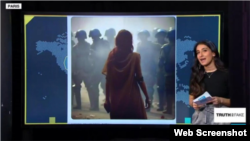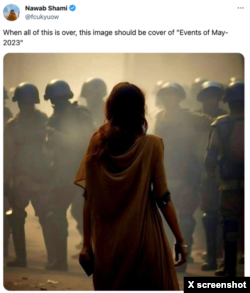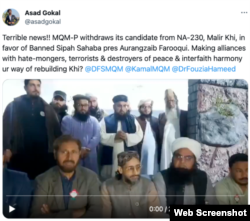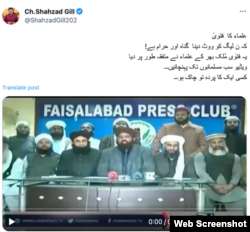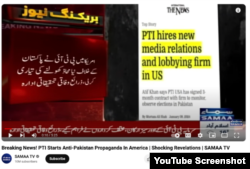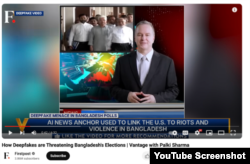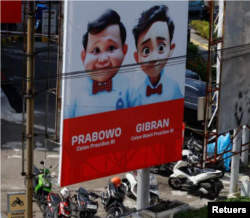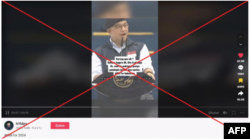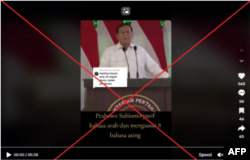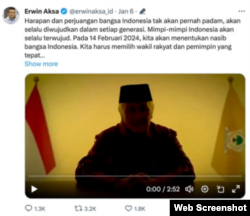On February 8, 128 million voters in Pakistan went to the polls to elect the nation’s next National Assembly, prime minister, and provincial and local legislatures. The events leading up to Pakistan’s election were tumultuous, including the imprisonment of popular former Prime Minister Imran Khan and the dismemberment of his Pakistan Tehreek-e-Insaf (PTI) party, the return of self-exiled former Prime Minister Nawaz Sharif, two deadly blasts on election eve and disruptions of mobile phone and internet services, as well as violence, on election day.
Yet this consequential election has dominated headlines for another reason — the novel use of artificial information (AI) and misinformation.
Young people constitute 45% of Pakistan’s voters, and most of them have social media accounts. As a result, this election season saw a particularly strong usage of digital platforms by political parties. Parties like the PTI, in particular, have used digital tools to level the playing field.
In this election, Khan’s PTI was noteworthy for its seemingly cutting edge use of AI for political campaigning. Although Khan was imprisoned, the PTI attempted to utilize AI to broadcast a message to his supporters. PTI members ran as independents and hosted online rallies via TikTok. Most notably, the PTI hosted an online political rally featuring an AI audio-generated video of Khan giving an address.
The video was seen by over 1.4 million people on YouTube, according to Pakistan’s Dawn newspaper, and over 4.5 million people across platforms, according to The Times of India. Khan and PTI initially denied the video was created by AI, but the party’s social media lead Jibran Ilyas later confirmed the video had been created using ElevenLabs software.
PTI’s AI-generated speech is not the first time that Khan has used AI in politics. Khan and the PTI employed AI to boost protests in response to Khan’s initial arrest in May 2023. France 24 first reported on how a viral image, first tweeted out by Khan on his X account, had in fact been generated by AI. The image, reposted by other accounts across platforms, was of a woman standing in front of Pakistani riot police in protest. Abdullah Saad, the man who created the viral image, later confirmed that the AI tool Midjourney was used.
However, Khan’s rally video is an important example of how AI, in some cases, can remain honest and not malicious.
James Schwelmein, a nonresident scholar in the South Asia Program at the Carnegie Endowment for International Peace and a senior director with Albright Stonebridge Group, told Polygraph.info that what made PTI’s use of AI perhaps different and novel in this case was how “it was used with his (Khan’s) blessing...(it) highlights how important consent is to its legitimacy…affirmative consent both on the part of the person who is generating the message, and also the party that is endorsing anybody out there.”
Beyond the PTI, digital tools have dominated Pakistan’s election season, and the variety and number of players using the digital space is telling for other elections. Perhaps in response to the PTI’s rally video, another AI-generated video of Khan on X was created with a diametrically opposed message to supporters — boycott the 2024 election. The PTI’s official account on X subsequently dismissed the video as a fake. Yet, this fake boycott announcement clip gained over 175,000 views.
Another aspect of disinformation during this election cycle involved efforts to create voter confusion. Besides false boycott announcements, posts also circulated falsely stating that the election had been postponed or that certain candidates had dropped out of the race. The PTI has also claimed its official websites were blocked in Pakistan.
Besides misinformation about the PTI, there have also been fake posts on X and Facebook targeting the PML-N. One notable example was a misleading video posted on X of religious scholars issuing a fatwa and forbidding individuals from voting for the PML-N.
The Pakistani fact-check organization Soch Fact Check determined that the video used in the post was actually a clip from 2017. Soch Fact Check also debunked the use of another old video, also from 2017, to allege that PML-N Vice President Javed Latif had been attacked by a mob while campaigning.
When it comes to influencing public opinion, Carnegie’s Schwelmein told Polygraph.info that “it's more about if you can't make people excited, you just don't want them to be excited for your opponent... And so by making it messy, they hope to kind of better their chances.”
Along with misinformation, conspiracy theories have circulated regarding the role of Pakistan’s current interim government in the election and how foreign media covered the election. The PTI promoted the narrative that federal authorities were undermining the election, accusing the government of blocking official PTI websites and being responsible for internet or mobile service disruptions — particularly outages that occurred during the PTI’s virtual Khan rally.
In contrast, a narrative circulated claiming that the PTI purposefully tried to get the world to view Pakistan’s election as illegitimate and to sympathize with Khan.
For instance, the Pakistan-based TV channel Samaa TV aired a segment titled: “Breaking News! PTI Starts Anti-Pakistan Propaganda in America,” which accused the PTI of hiring foreign lobbyists to undermine the election.
Yet, public distrust and dissatisfaction were an issue in Pakistan before the advent of AI.
Niloufer Siddiqui, a nonresident fellow with Stimson Center’s South Asia program, told Polygraph.info that such narratives and misinformation are nothing new.
“Belief in conspiracy theories and misinformation has historically been quite high in Pakistan, perhaps due to an overall lack of trust in the state, lack of trust in foreign powers (who are often accused of meddling in Pakistan's domestic politics), and lack of trust in media sources (particularly traditional media, such as TV channels),” Siddiqui said.
What is rapidly changing, she noted, is the technology available to political actors.
Unfortunately, preexisting attitudes make it likely that misinformation and disinformation will spread in Pakistan. Recent polling by Gallup found that “Pakistanis are more discouraged than they have been in decades.” When asked about economic conditions, 70% of respondents viewed their circumstances as “getting worse.” In addition, when asked if they believed in the honesty of elections, 70% of respondents said “no.”
Even worse, events that took place as election day unfolded perhaps validated some of these conspiracy theories and narratives. The morning of election day, Pakistan’s Interior Ministry announced it was suspending mobile phone services across the country due to terrorism concerns, and disruptions remained even after the polls closed. In response, the PTI called for a deadline extension for polling places. However, Pakistan’s election commission had already ruled out requests for extensions.
In addition, there were violent attacks in the Khyber-Pakhtunkhwa and Balochistan provinces, including two apparent bomb blasts outside election offices on the eve of the vote.
Pakistan is not the only country experiencing the impact of AI on elections. Bangladesh’s national election in early January saw the heavy use of AI-generated deep fakes, among other forms of disinformation, by pro-government forces.
Examples included deepfakes of a news anchor reporting U.S. involvement in starting riots, a female politician in a bikini and even an AI-generated image of opposition figure Tarique Rahman saying that his party’s support for Gaza should waver, in order to sway public opinion.
Yet, Bangladesh’s election was uncontested, with opposition leaders imprisoned and barred from challenging incumbent Prime Minister Sheikh Hasina. Pakistan provides a more striking case study of how AI and more advanced technology could influence a more competitive and democratic race.
Pakistan’s election will immediately be followed on February 14 by a national election in Indonesia, which will simultaneously elect both a new president and legislature.
The world’s third largest democracy, Indonesia has seen political parties use AI to an arguably even more brazen extent than Pakistan.
Notable examples include the use of AI to create “cute” political cartoons of candidates like presidential candidate Prabowo Subianto and his running mate Gibran Rakabuming Raka, along with deep fakes of Subianto and another presidential candidate, Anies Baswedan, giving speeches in Arabic.
Perhaps the most shocking fake video, which was posted on X, used AI to generate the voice of the late Indonesian dictator Suharto endorsing the Golkar party. The audio states: “I am President Suharto, the second president of Indonesia, inviting you to elect representatives of the people from Golkar.”
As in Pakistan, the election in Indonesia is perhaps vulnerable to AI and disinformation due to democratic backsliding, with recent changes in electoral rules and preferential treatment of candidates (and perhaps even nepotism). On February 7, 100 students marched in Indonesia’s capital, Jakarta, demanding that the current president stay neutral in the election, given that his son, Gibran Rakabuming Raka, is the running mate of front-runner presidential candidate Prabowo Subianto. Still, Indonesia’s presidential race is notably competitive, with a run-off widely predicted.
The tactics employed in Bangladesh, Indonesia and Pakistan are not limited to Asia, and they could serve as a warning, with 64 nations set to hold national elections this year. Indeed, if 2024 will be the year of elections, it may also be the year of AI.






